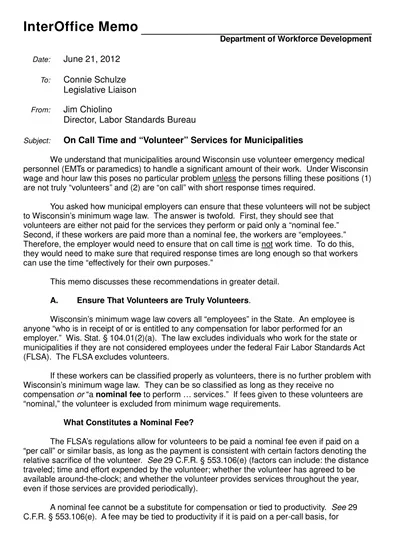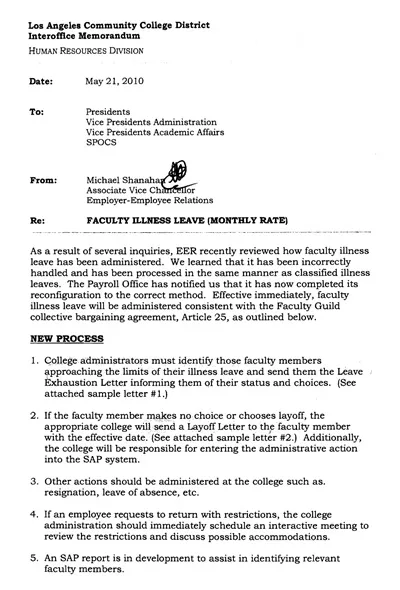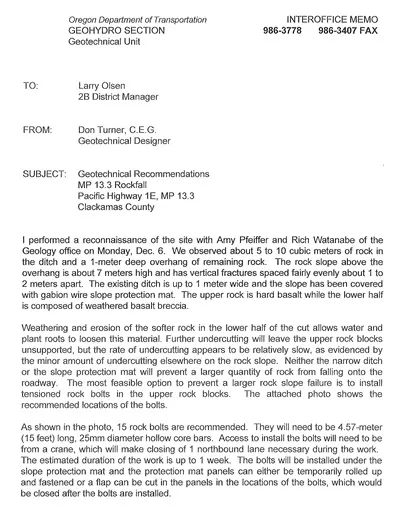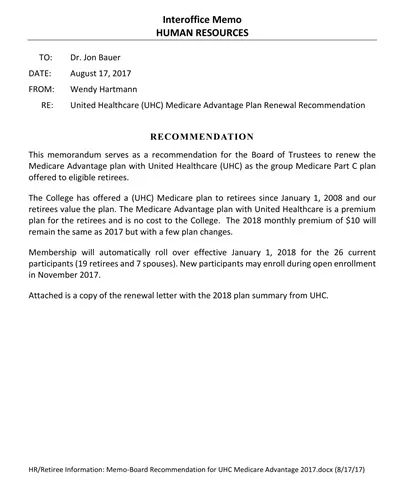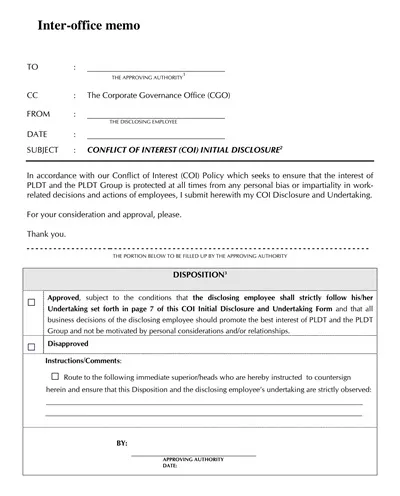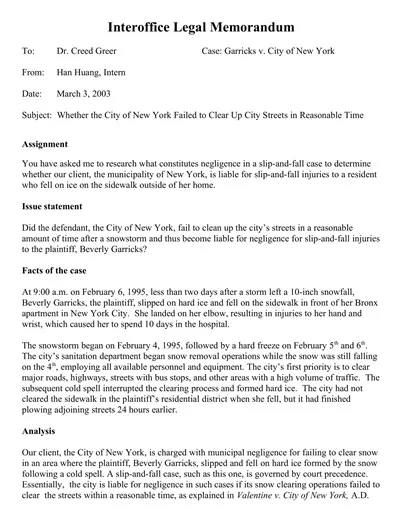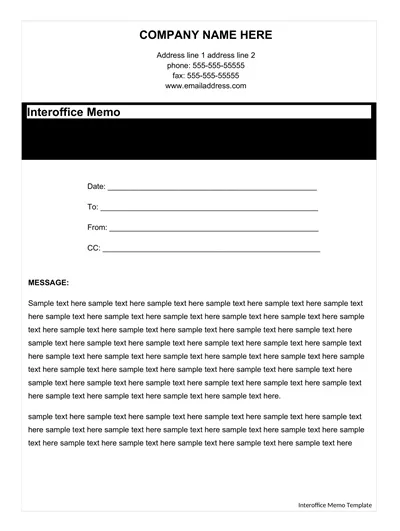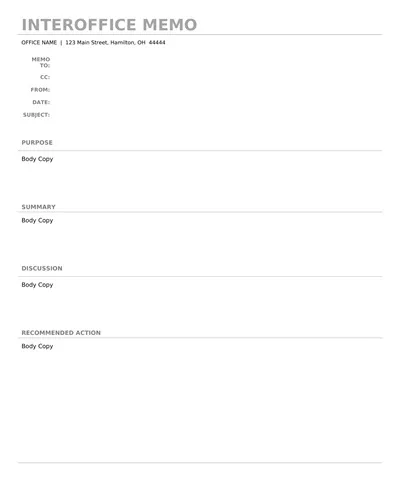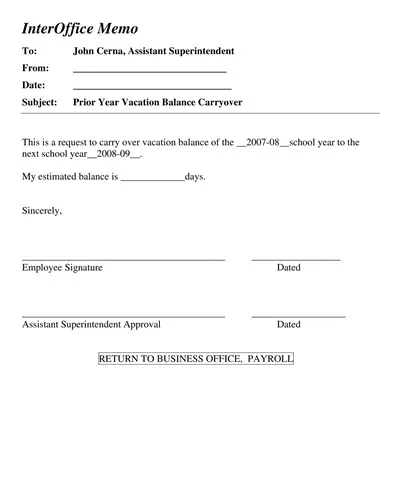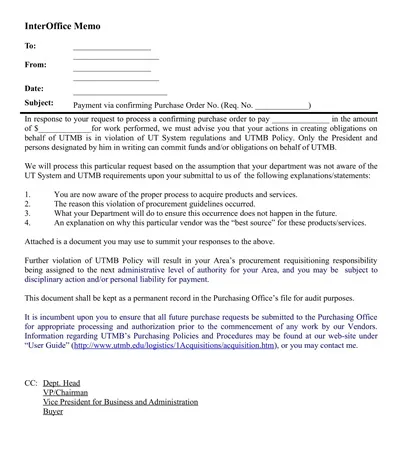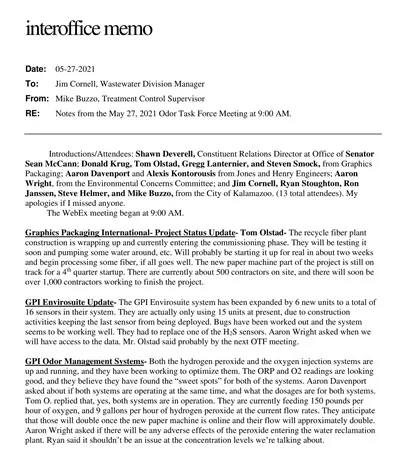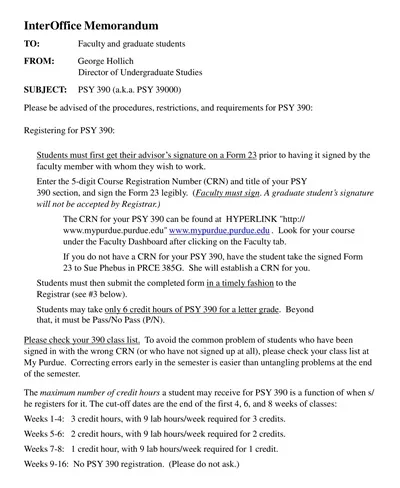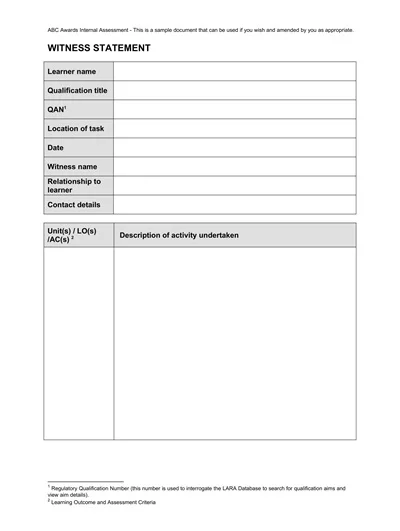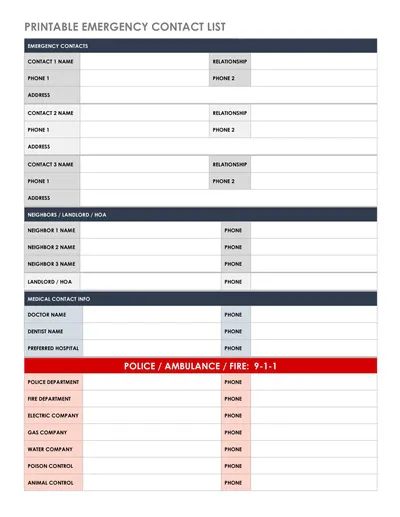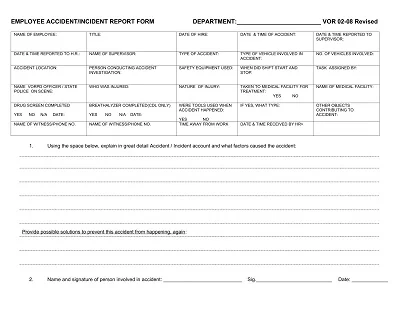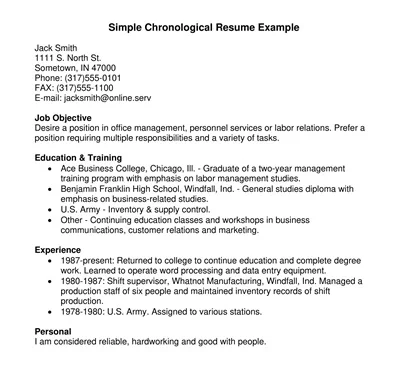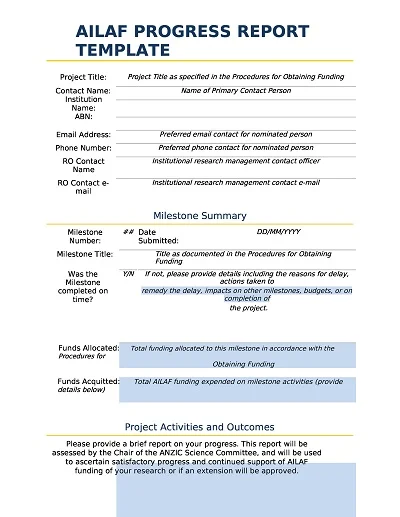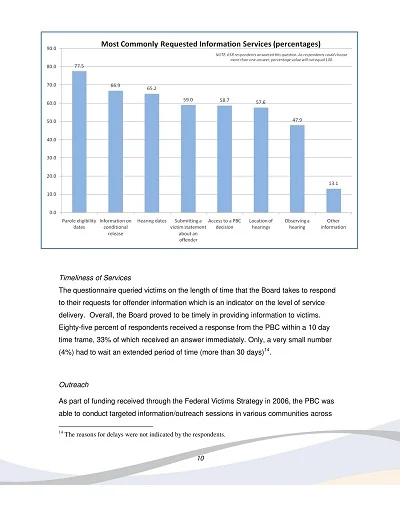An interoffice memo structure is meant for an organization to pass information on to its workers. It mostly comprises parts such as the memo’s date, recipient/s, the author, the title, and the content. That way, the format is uniform, easy to read, and quick to convey the message that is to be conveyed during internal communications.
The interoffice memo can relay many messages, such as policy changes, meeting schedules, new projects, process change notifications, etc. A predefined format also enables the employees to type and circulate essential information to different departments to enhance effective communication.
Download Free Sample Interoffice Memo Templates
What is an Interoffice Memo?
An interoffice Memo is an internal corporate communication form for distributing information between workers and units. While emails and other INM types of communication may be more casual, memos are almost always used for more formal business communication and guarantee the clear, structured delivery of information.
At the same time, it is implemented to keep the staff posted on matters such as new policies, changes to nerve procedures, meeting schedules, or any other eventuality that may require the targeted recipient’s attention or action. Using a standardized format, such as the one described above, interoffice memos help eliminate uncertainty by guaranteeing that all the necessary audiences receive identical messages.
Elements of an Interoffice Memo
When drafting an interoffice memo, particular factors must be included in an organization’s memo to avoid diversification of communications. These elements typically comprise:
- Heading: This is the title section of the memo where a professional outlook is provided depending on the organization preparing the memo. It provides a prelude to the official exchange of messages.
- Date: This is the date when the memo will be issued. It is important to keep records and for reference purposes.
- Recipient(s): First, identify the people to whom the memo is written. It may target a certain personality, the whole organization or company where the information has to reach, or even a certain department or section of the organization.
- Sender: Proper identification of the sender with his or her name and designation-writing a memo. This kind of attribution is useful for dealing with the matters of responsibility and the second question.
- Subject: Executive summary: A one-line or two-line subject identifies the nature of the memo’s contents. It should be engaging to draw attention and communicate the memo’s purpose to its reader.
- Message Body: This is a short summary of the memo; all its aspects are explained in detail here. It should be divided into sections so people can follow it much easier. Try using bulleting or numbering to contain information to the point when it is unfeasible to use more bulleting or numbering.
- Closing: That said, it may be useful to state one last time at the end of the memos or within specific memos the conclusion/points made or the necessary call to action.
Incorporating these elements will enable organizations to improve their internal communication, thus increasing the efficiency of the messages passed on from one team to the other.
Advantages of an Interoffice Memo
Interoffice memos are valuable in many ways and can improve organizational communication. Some of the benefits that may be expected include enhanced clarity, the ability to share information and accountability checks.
Improved Clarity
Interoffice memos help eliminate confusion by following a clear format that helps the sender think through a subject systematically. Dividing Organon into particular sections of the heading, the date of composition, and the subject guarantees the conspicuous presence of the most important information and the possibility of its fast and painless perception. This accuracy assists in minimizing misunderstandings and guarantees that the supposed message reaches the receipt readily understandable.
Efficient Information Dissemination
In this way, using a standard format, the turning of interoffice memos makes it possible to disseminate information all over the enterprise rapidly. Since created as a memo, with little detail lest they become proposals, the pre-prepared document can be forwarded to as many recipients as needed without changing the format. This efficiency, however, becomes highly beneficial, especially in periodic reports, chain correspondence, or even group addressing of many employees to ensure flexibility of organizational processes.
Enhanced Accountability
Adding information like sender specifics and receivers list helps increase responsibility in an organization. Knowing who prepared the memo and to whom it was delivered makes it possible to perform further actions and explain whenever necessary. It also helps to clear complex queries more efficiently and makes all stakeholders aware of their roles and responsibilities.
These benefits can be used to optimize organizational communications and improve the collaboration between departments within an organization.
Importance of Interoffice Memos
Likewise, interoffice memos are important for communication between interoffice organization personnel. Memos are highly reliable means for ensuring the communication of information that needs to be accurate and delivered promptly in organizations and across departments and members.
They are important since they act as a source of communication documentation since the saves may be referred to in future discourse or decisions. This permanence is so valuable that the documentation of changes in policies, processes, and projects is helpful in the improvement of organizational memory.
Furthermore, this type of memo is professional, as it also helps avoid a casual tone that may bring about informality among recipients, degrading the level of importance they will give to the information in the memos. Interoffice memos are critical in dispassionately passing essential information within an organization.
Through their formal structure, even the information recipient is psychologically prepared, reducing potential confusion and mistakes within a business environment. In light of these changes, using inter-office memos remains a fundamental feature for promoting effective and efficient communication within organizations.
How to Create an Interoffice Memo Template
Before the initial preparation of an interoffice memo, one should know what factors and aspects need to be considered when developing an interoffice memo template that may be easily used by all the members of an organization. Follow these steps to design a standardized memo template for your organization:
1. Identify the Purpose
Start this by determining the communications that your organization often requires to disseminate. Then, it is important to define the common business scenarios required for the memo you are developing and what changes will be announced, such as policy updates, meeting schedules, or procedural changes.
2. Design a Professional Header
Use a header with your organization’s logo and relevant contact information, including the organization’s name. This adds to the memo’s formal setting and guarantees that the recipient and everyone addressing the communication are aware that they are receiving a memo.
3. Include Key Sections
Structure the memo to incorporate all crucial elements:
- Date: Include a specific area of the memo where the date of issue is featured.
- Recipient(s): Specify fields to easily present other intended recipients, if any, as persons or departments.
- Sender: Provide the sender’s name and position to ensure accountability for the message sent and received.
- Subject Line: Circulate a section of the memo heading that is brief and informative about the content of the memo.
4. Develop the Message Body
Creating a section where the findings of the detailed message will be outlined should also be highly flexible. This should support bullet points, numbered lists, and subheadings to improve overall structure and a clear division of sections.
5. Add a Closing Statement
An optional closing section can be prepared to include summaries in the form of summary points or a call to action, which would also help get stronger responses from the readers and provide better clarity regarding the action plan afterward.
6. Standardize Formatting
Aside from text, maintain a strict font type, size, margins, and space to avoid discrepancies in look and feel. Such conditions are better stated in a style guide when defining these specifications.
7. Outsource the Distribution Process
Explain how the memo will be distributed, whether by email, internal mail, or intranet, and detail how it will be done.
By doing the above, you might read and write an effective interoffice memo template, enabling professionalism and clear communication in your firms. Fixing a certain approach also benefits future memo creation work while promoting an efficient and effective organizational communication culture.

